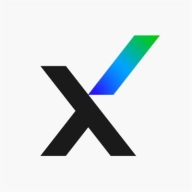

Trellix Advanced Threat Defense and Microsoft Defender Vulnerability Management compete in threat detection and management. Microsoft Defender Vulnerability Management appears to have the edge due to its superior feature set.
Features: Trellix Advanced Threat Defense includes heuristic analysis, zero-day threat detection, and a highly valuable administration console. Its detection and response module is also strong. Microsoft Defender Vulnerability Management excels in providing advanced integration, automated patch management, and maintaining a comprehensive vulnerability database.
Room for Improvement: Trellix Advanced Threat Defense could enhance integration with more third-party platforms, improve user interface customization, and extend its reporting capabilities. Microsoft Defender Vulnerability Management would benefit from reducing the complexity of its configurations, enhancing its real-time alert system, and providing more detailed security insights for better decision-making.
Ease of Deployment and Customer Service: Trellix Advanced Threat Defense offers straightforward deployment and robust customer support, which aids in quick onboarding. Microsoft Defender Vulnerability Management's cloud-centric deployment and automated configurations appeal to users who value quick integration and ease of use.
Pricing and ROI: Trellix Advanced Threat Defense presents a competitive pricing model with cost benefits in high-threat environments, offering a favorable ROI. Microsoft Defender Vulnerability Management, despite potentially higher initial costs, justifies its investment through significant vulnerability risk reduction, providing substantial ROI.

Microsoft Defender Vulnerability Management enables organizations to identify vulnerabilities, manage patches, and fortify threat detection. It offers endpoint assessments, cloud incident management, and dynamic security through Microsoft's Security Scorecard integration.
Organizations leverage Microsoft Defender Vulnerability Management for advanced threat detection and response. It provides robust tools for vulnerability assessment and cloud incident management, integrated with Microsoft's Security Scorecard to enhance dynamic security profiling. Key features include automatic patch deployment, security configuration management, and seamless integration with Microsoft platforms, benefiting both on-prem and cloud environments. Organizations can track vulnerabilities with severity-based reports, helping manage outdated software and minimizing threat exposure.
What are the key features of Microsoft Defender Vulnerability Management?In healthcare, Microsoft Defender Vulnerability Management helps manage compliance with health regulations, while in finance, it aids in securing sensitive data from cyber threats. Manufacturing sectors benefit from its patch management, keeping operational technology systems less vulnerable to disruptions.
Uncover Hidden Threats
Combine in-depth static code analysis, dynamic analysis (malware sandboxing), and machine learning to increase zero-day threat and ransomware detection.
Threat Intelligence Sharing
Immediately share threat intelligence across your entire infrastructure—including multi-vendor ecosystems—to reduce time from threat encounter to containment.
Enable Investigation
Validate threats and access critical indicators of compromise (IoCs) needed for investigation and threat hunting.
We monitor all Advanced Threat Protection (ATP) reviews to prevent fraudulent reviews and keep review quality high. We do not post reviews by company employees or direct competitors. We validate each review for authenticity via cross-reference with LinkedIn, and personal follow-up with the reviewer when necessary.